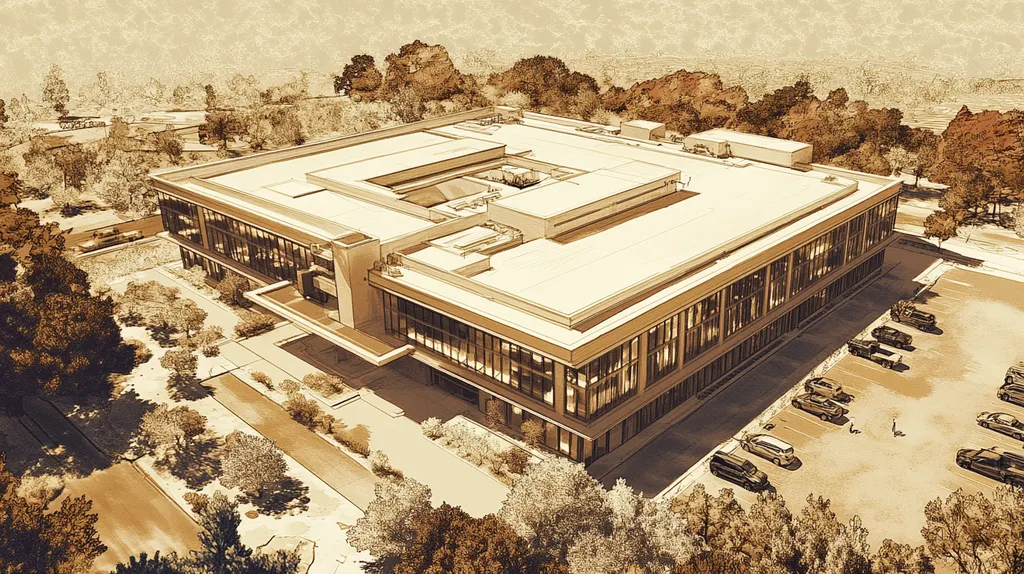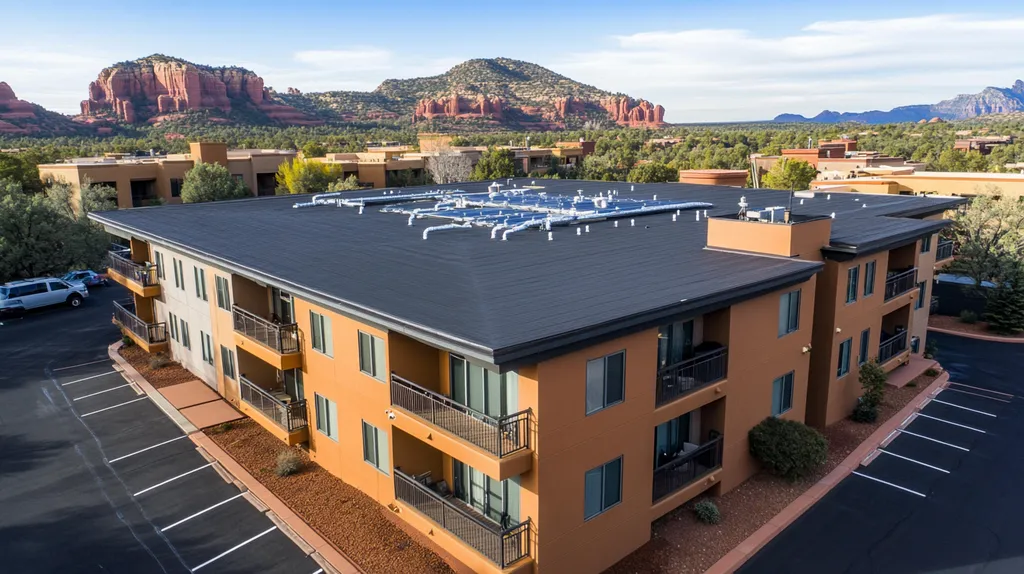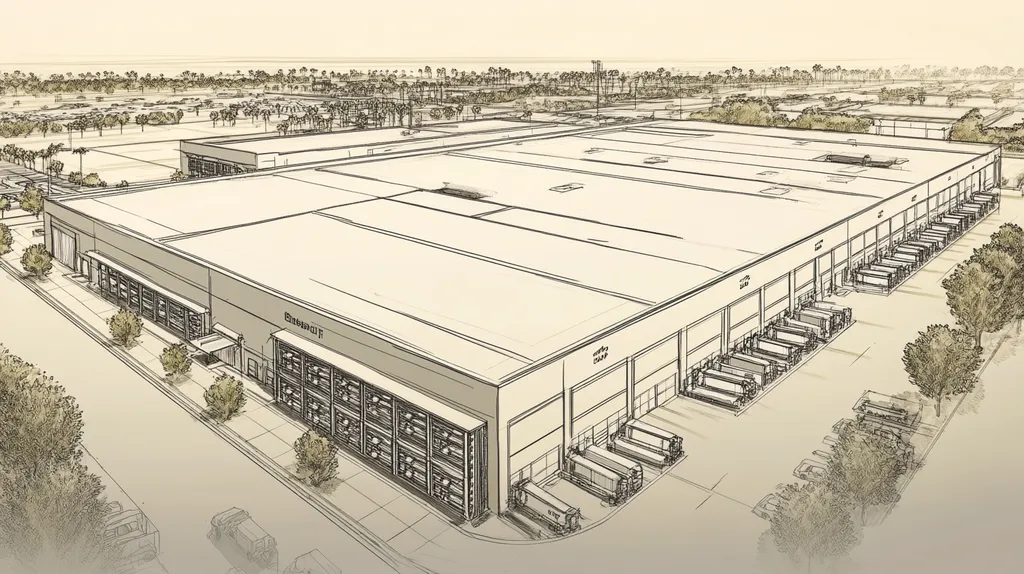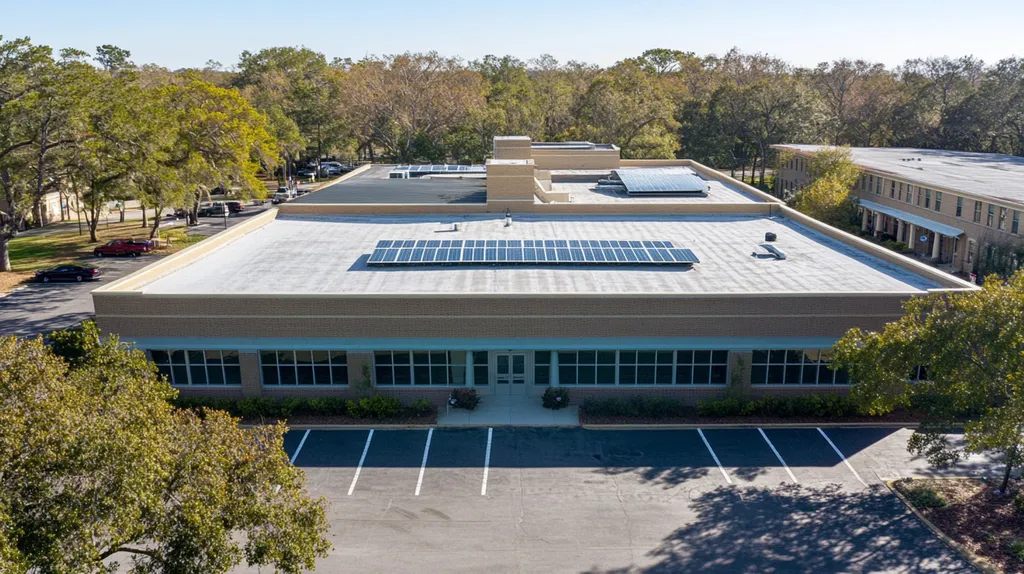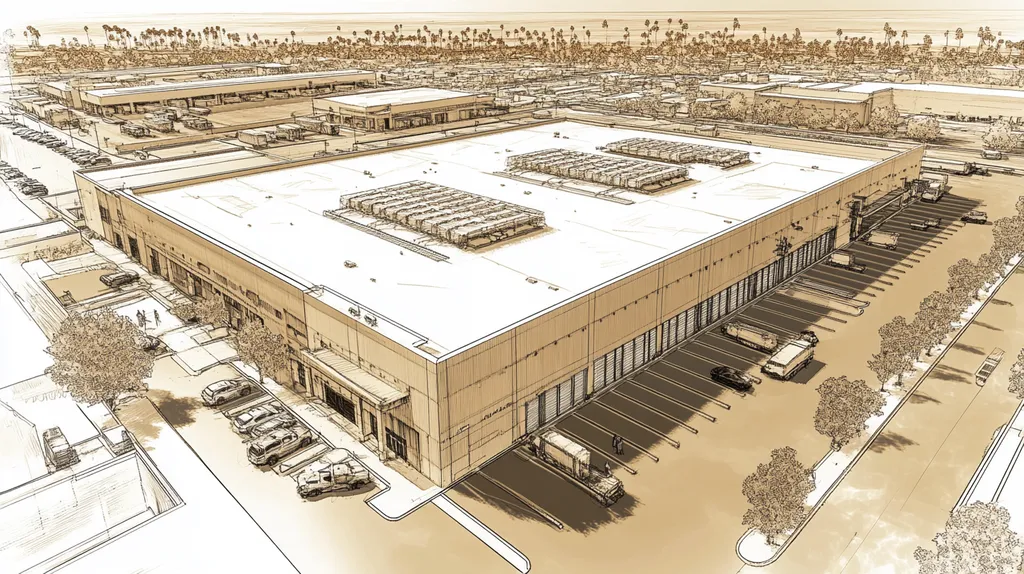Industrial roof coating failures contribute to over $2.5 billion in annual repair costs across commercial facilities, with safety incidents during application ranking among the top concerns for facility managers.
Understanding proper safety protocols for coating industrial roofs is essential not only for protecting workers but also for ensuring long-term structural integrity and regulatory compliance.
This comprehensive guide examines critical safety considerations in roof coating applications, from material selection and environmental factors to application procedures and maintenance requirements, providing facility managers with actionable insights for risk mitigation.
SECTION 1: THE BASICS EXPLAINED
Ensuring safety in industrial settings is critical, especially concerning roof coatings. According to the National Roofing Contractors Association, the improper application of these coatings can lead to significant legal liabilities and costly repairs. For property owners and facility managers, grasping the fundamental concepts of roof coating is essential for protecting investments and prioritizing worker safety. This section breaks down what roof coatings are, their significance, and how they function.
What It Is (In Plain Language)
A roof coating is a liquid-applied product intended to enhance the durability of industrial roofing surfaces. It acts as a barrier against leaks, minimizes temperature variations, and reflects harmful UV rays. Available in various formulations like elastomeric and polyurethane, these coatings are designed for specific roofing materials.
The application process begins with thoroughly cleaning the existing roof surface to remove debris and defects. Once prepared, the coating is typically applied using a spray gun or roller, creating a seamless layer that protects against the elements.
A clear understanding of these coatings empowers facility managers to choose the right type for their roofing needs. This decision is vital for maintaining structural integrity and preventing costly issues in the future. Property owners should also consider manufacturer specifications that can affect coating effectiveness and lifespan.
Ultimately, roof coatings are crucial for establishing a safe and efficient roofing system. By selecting the appropriate coating, facility managers can shield their buildings from environmental damage while improving energy efficiency.
Why It Matters (To Your Building)
The significance of roof coatings goes well beyond style; they are essential for a building’s safety and performance. A properly coated roof reduces the risk of leaks, which can lead to detrimental issues like mold growth, structural damage, and significant repair costs. Undetected leaks can also create serious safety hazards, particularly in industrial environments.
Research indicates that roofs lacking proper coatings may require replacement in as little as 12 to 15 years. In contrast, roofs with effective coatings can last much longer, providing tremendous savings for property owners. Thus, investing in roof coatings not only extends the lifespan of the roof but also enhances the overall value of the property.
Energy costs present another important consideration. Reflective coatings can lower cooling expenses during hotter months by deflecting heat away from the building. This results in a more comfortable workspace and contributes to sustainability efforts.
Addressing safety concerns through roof coatings means adhering to industry standards, which in turn protects workers and assets. Prioritizing roof coatings allows facility managers to proactively lower risks and improve workplace conditions.
How It Works
The effectiveness of roof coatings lies in their ability to establish a protective barrier over existing roofing materials. When applied correctly, these coatings can seal minor cracks and gaps, preventing water infiltration that can cause leaks. This capability is especially crucial for flat roofs, which are prone to pooling water.
Additionally, coatings offer thermal insulation by reflecting damaging UV rays and limiting heat transfer into the building. This not only keeps roof surfaces cooler, but also reduces thermal stress that can lead to wear and tear over time.
Moreover, many contemporary coatings are engineered to resist chemicals and abrasions, catering to the specific challenges presented in industrial settings where roofs may be exposed to hazardous materials.
By understanding how different coatings interact with various roofing materials, property owners and facility managers can make informed decisions. A successful application of a roof coating enhances safety and contributes to a longer-lasting roofing system.
SECTION 2: PRACTICAL APPLICATIONS
Roof coatings are not just an aesthetic enhancement; they are a crucial line of defense for industrial facilities. Alarmingly, nearly 30% of roof leaks can be traced back to insufficiently applied coatings, leading to serious implications such as costly infrastructure damage and hazardous working conditions. Recognizing the practical applications of roof coatings is vital for property owners and facility managers focused on maximizing safety and extending the lifespan of their roofs. In this section, we examine common utilizations, peak application periods, and how these coatings interact with other roofing systems.
Common Uses & Examples
Roof coatings fulfill a variety of protective roles that enhance both safety and functionality. Many industrial buildings utilize these coatings to guard against harmful UV rays, which can degrade roofing materials over time. For instance, elastomeric coatings provide a flexible and waterproof barrier that reflects sunlight, mitigating heat accumulation and reducing energy expenses.
Furthermore, specific coatings are designed with antimicrobial properties, which are essential in settings where cleanliness is paramount. In food processing facilities, these coatings help inhibit the growth of mold and bacteria, ensuring compliance with stringent health regulations. Such applications reflect the multi-faceted benefits roof coatings offer to property owners.
A significant advantage of applying a suitable roof coating is the potential to prolong the lifespan of the existing membrane by as much as ten years. By avoiding the costly route of a complete roof replacement, facilities can make a financially sound investment in coatings that protect assets and support long-term sustainability.
When You Need It Most
The urgency for roof coatings becomes particularly pronounced during seasonal changes. Fall, for example, is a critical time for applying coatings, as they provide essential weatherproofing before the onset of harsh winter conditions. Delaying maintenance can lead to severe leaks that not only inflate repair costs but also create safety hazards.
Additionally, facilities with high foot traffic or heavy machinery usage should prioritize roofing maintenance through coatings. These environments require robust solutions capable of enduring significant wear and tear. By ensuring the right coating is applied, facility managers can guarantee that roofs maintain their safety and functionality, thus minimizing downtime and upholding safety standards.
Moreover, following storm damage or severe weather events, conducting immediate inspections and possibly applying new coatings can help prevent minor issues from escalating. Maintaining a proactive approach to roofing not only mitigates risks but also enhances operational efficiency, reinforcing the critical nature of timely interventions.
Interactions With Other Systems
Roof coatings need to be considered in the context of other roofing systems to ensure optimal performance. Adhesion is a critical factor; for a coating to function effectively, the existing membrane must be properly prepared. If the surface is not adequately cleaned or primed, the coating may fail to adhere, which could lead to premature peeling or flaking.
Additionally, the application of coatings can influence drainage systems. An incorrectly applied coating might block drainage paths, leading to standing water that exacerbates leaks and roof deterioration. Therefore, evaluating roofing systems as a cohesive unit is essential to understand how coatings will operate in conjunction with existing structures.
Regular inspections should also encompass the relationships between any installed equipment, such as HVAC systems, and the roof coating. This vigilance helps to prevent issues arising from condensation or leaks that may compromise system performance. An integrated understanding of these interactions is vital for ensuring both safety and efficiency in industrial environments.
SECTION 3: KEY TERMINOLOGY DECODED
Grasping the terminology related to industrial roof coatings is essential for ensuring safe and effective application. Misunderstanding these terms can lead to safety hazards and significant financial repercussions. For instance, selecting the wrong materials can compromise the roofing system, undermining the integrity of the building and endangering the safety of its occupants. By familiarizing themselves with key terminology, property owners and facility managers can make informed choices in their roofing projects.
Essential Terms Explained
Understanding critical terms in the arena of roof coatings is vital as each carries distinct implications for safety and performance. The term “substrate,” for example, refers to the underlying material that the coating will adhere to. Knowing the substrate type is crucial, as it directly affects how well the coating adheres and its long-term durability.
Another important term is “thermal emittance,” which measures how effectively a coating can reflect heat. Coatings with high thermal emittance contribute to reduced energy consumption and a more comfortable indoor environment, enhancing safety by preventing heat-related issues.
The “Solar Reflective Index” (SRI) gauges how well a roof can reflect sunlight. A higher SRI indicates better energy efficiency, a key factor in sustainability. Opting for coatings with favorable SRI ratings can lower energy costs, further promoting the safety of workers by reducing heat exposure.
Also critical is the term “VOC” (Volatile Organic Compounds), which can be harmful during both application and curing. Low-VOC or zero-VOC coatings are safer choices that align with health standards, crucial for maintaining a healthy work environment. Facility managers should prioritize these options to enhance safety and comply with regulations.
Industry Jargon Translated
Industry jargon can often confuse those outside the roofing field. For example, “application method” refers to how a coating is applied—whether by spraying, rolling, or brushing. Different methods carry unique safety implications; spray applications may generate airborne particles, necessitating the use of adequate personal protective equipment (PPE).
An equally significant term is “moisture barrier,” describing a layer in the roofing system that prevents moisture infiltration. A failing moisture barrier can lead to serious issues like mold growth and structural damage. Therefore, choosing the appropriate coating is essential for maintaining a reliable moisture barrier.
“Cure time” also plays a crucial role, indicating how long a coating takes to fully dry and bond with the surface. Knowing this timeframe is vital for scheduling maintenance and ensuring worker safety. Proper curing minimizes slip hazards during the drying period, ensuring both safety and functionality.
Measurement & Units Simplified
Measurements in roofing coatings can be bewildering without proper context. “Mils” are a common measurement, denoting the thickness of the coating, with one mil equaling one-thousandth of an inch. Understanding the thickness is essential for adherence to industry standards and ensuring the roof’s long life.
Another important unit is “linear feet,” which measures the length of material needed for seams and edges. Accurate calculations are vital to prevent waste and ensure robust protection against leaks. Inaccurate measurements can lead to inadequate coverage and heightened safety risks.
Lastly, “psi” (pounds per square inch) measures pressure, particularly relevant when applying coatings in underwater conditions or high-wind areas. Understanding pressure limits ensures optimal coating performance, significantly mitigating the risk of failure and maintaining safety standards.
SECTION 4: DECISION FACTORS
In industrial roofing, the stakes are exceptionally high. Making an ill-informed decision can result in severe leaks, potential safety hazards, and damage to critical equipment. A study by the National Institute of Standards and Technology indicates that inadequate roofing maintenance can cost businesses millions in unforeseen repairs every year. Therefore, property owners and facility managers must grasp essential decision factors such as cost, performance, and durability to ensure informed choices.
Cost Considerations
Cost remains a primary concern when selecting roof coatings. Opting for a lower-priced material might seem economical initially, but hidden costs can proliferate. Cheaper coatings often necessitate more frequent reapplications, resulting in higher long-term expenses.
Moreover, the installation process significantly affects total costs. A poorly applied coating can exacerbate damage, leading to expensive repairs down the line. Investing in quality coatings may appear costly upfront but ultimately leads to substantial savings over time.
Property owners should also consider indirect costs, such as potential business interruptions during re-roofing scenarios. A well-planned investment can mitigate future losses, solidifying the importance of thorough cost evaluations.
In summary, a careful financial analysis allows property owners to strike the right balance between initial expenditures and ongoing value. Making informed choices ultimately contributes to the financial health of the facility.
Performance Trade-offs
Performance is another crucial factor when selecting coating materials. Different coatings offer a variety of traits such as reflectivity, durability, and chemical resistance. While a highly reflective coating can enhance energy efficiency, it may not withstand heavy foot traffic effectively.
Facility managers must assess their specific requirements against available options. For instance, a manufacturing facility exposing its roof to aggressive chemicals necessitates a coating designed for chemical resistance. Overlooking these performance trade-offs risks premature coating failure.
Weather resistance is also essential. Coatings that falter under local weather conditions can deteriorate quickly, leading to costly replacements. A comprehensive understanding of the coating characteristics is vital for achieving tailored solutions.
Balancing performance capabilities with budget considerations ensures robust protection against environmental elements. Decisions should prioritize maximizing the lifespan of the roof while adhering to financial constraints.
Lifespan & Durability Factors
Lifespan is a pivotal metric that significantly influences roofing choices. Coatings with extended durability minimize the frequency of reapplications, which directly impacts overall maintenance costs. A high-quality coating typically boasts a lifespan of 10 to 20 years, whereas lower-grade options range from 5 to 10 years.
Environmental conditions further influence longevity. Facilities in regions with extreme temperatures may need specialized coatings capable of withstanding high-stress scenarios. This initial investment in superior coatings pays dividends through reduced replacement needs over time.
Durability also integrates with safety considerations. A deteriorating roof can pose safety risks for maintenance personnel and increase liability for property owners. Ensuring that coatings meet industry standards for slip resistance and load capacity is crucial.
In conclusion, evaluating lifespan and durability is fundamental in developing long-term roofing strategies. The choice of the right coating can protect investments in industrial roofs while enhancing overall operational efficacy.
SECTION 5: COMMON CHALLENGES
Overlooking common challenges in roof coatings can lead to dire consequences for industrial facilities. Neglecting these issues may result in significant financial losses and jeopardize worker safety. Industrial property owners must address frequent problems stemming from insufficient roof maintenance, recognize critical warning signs, and adopt preventative measures to avert expensive repairs. This section delves into these challenges and offers practical strategies to tackle them effectively.
Frequent Problems & Solutions
A prevailing challenge in industrial roof coatings is moisture accumulation, which can cause blistering or peeling. This often occurs when the roof surface is not adequately prepared prior to coating application. To combat this issue, property owners should prioritize thorough cleaning and drying of the roof, as moisture can not only harm the coatings but also lead to mold growth, posing long-term health risks.
Ultraviolet (UV) damage is another significant concern. UV rays can gradually degrade roof coatings, leading to the need for premature reapplication. Conducting routine inspections and applying new coatings on schedule can significantly counteract UV effects, preserving the roof’s integrity and workplace safety.
Chemical spills or the presence of heavy debris can also undermine the protective qualities of roof coatings. Immediate cleanup of spills and regular maintenance of a clean roof surface are essential practices that prevent corrosion and enhance slip resistance.
Lastly, poor drainage systems can lead to water pooling, further compromising the roof’s structure. Installing robust drainage solutions and ensuring proper slope and grading will effectively mitigate this risk, enhancing overall roof performance and safety.
Warning Signs To Watch For
Property owners should regularly monitor for specific warning signs indicating roofing problems. Sagging or cracking in the coating can be direct indicators of structural weaknesses. Swift intervention upon observing these signs is critical to prevent escalating damage and associated safety hazards.
Pooling water presents another alarming symptom that can lead to leaks and structural degradation. Performing visual inspections after rainfall can help in identifying standing water issues and enable prompt corrective measures.
Furthermore, blistering or bubbling on roof surfaces signals trapped moisture beneath the coating, which can compromise adhesion and increase safety risks. Property owners must take this indication seriously and act immediately to restore roof integrity.
Discoloration or fading of the coating is often a telltale sign of UV damage. Consistent oversight and timely maintenance will be required to lengthen the lifespan of the roof and safeguard facility assets from deterioration.
Preventative Approaches
Proactive maintenance is crucial in circumventing many prevalent challenges associated with roof coatings. Scheduling regular inspections—ideally at least twice a year—enables early detection of emerging issues, thereby managing safety concerns and preserving coating integrity.
Establishing a routine cleaning regimen also aids in preventing the buildup of debris and harmful chemical spills. By maintaining a clean roof surface, facilities can lower slip hazards and support efficient water drainage.
Investing in high-quality coatings specifically tailored to resist UV damage and chemical exposure can yield substantial long-term savings. The initial investment in superior materials may reduce the frequency of necessary recoating, thus improving economic sustainability.
Lastly, involving qualified professionals in both the application and ongoing maintenance processes ensures adherence to best practices, minimizing risk and promoting optimal coating effectiveness. Expert guidance in selecting appropriate coatings can greatly enhance safety measures and overall roofing performance.
SECTION 6: NEXT STEPS & RESOURCES
Understanding safety considerations for coating industrial roofs is essential for safeguarding assets and ensuring compliance with regulatory standards. With the potential for substantial financial losses and legal liabilities, facility managers and property owners must be proactive in their approach. Clarifying key questions for roofing providers, engaging with established industry standards, and pursuing further education can significantly enhance the safety and integrity of roofing systems.
Questions To Ask Providers
Choosing the right roofing provider is a pivotal decision. Facility managers should start by inquiring about the safety training protocols in place for staff. Understanding a provider’s commitment to ongoing education and safety practices reveals their dedication to high-quality work.
It is crucial to ask about the materials and methods being used for roof coating applications. Are the coatings compliant with relevant safety standards? This knowledge helps owners avoid low-quality options that could jeopardize the roof’s longevity and overall safety.
In addition, requesting references from past clients is important to assess the provider’s track record. An effective provider should willingly share details about previous successes, providing insight into their performance and reliability.
Lastly, discussing warranty options is critical. Are any safety-related incidents covered under the warranty? A clear understanding of these terms can ensure better protection and peace of mind for property owners.
Industry Standards & Guidelines
Familiarizing oneself with industry standards enhances decision-making processes significantly. Organizations such as OSHA and the National Roofing Contractors Association offer guidelines essential for maintaining safety in roofing projects.
These guidelines address various aspects of roof coating applications, including fall protection, safety gear, and application procedures, thus establishing minimum safety requirements. Following these standards not only mitigates risks but also ensures compliance with legal obligations.
It is important to stay updated on evolving regulations, as industry standards often change. Understanding these updates empowers property owners to adapt and consistently enhance safety measures within their operations.
Furthermore, certifications from recognized certifying bodies can indicate a provider’s adherence to these established standards. When selecting a contractor, verifying their certifications provides additional assurance regarding their capability to manage safety risks effectively.
Further Learning Simplified
Investing in further education is essential for property owners and facility managers alike. Numerous online courses and webinars provide valuable insights into the latest advancements in roofing technologies and safety practices.
Trade organizations typically offer resources such as articles, case studies, and comprehensive guides that demystify complex topics. Engaging with these materials keeps teams informed and proactive in their approach to roof safety.
Additionally, attending industry conferences furnishes networking opportunities and facilitates the sharing of knowledge. These events showcase innovative technologies and safety advancements critical for optimizing roof coatings in industrial environments.
Finally, connecting with industry experts through forums and discussions fosters continuous learning, ensuring that team members remain knowledgeable and confident in their roofing strategies.
The Bottom Line
With industrial roof coating failures contributing to over $2.5 billion in annual repair costs, implementing proper safety protocols is no longer optional—it’s imperative for operational continuity.
The consequences of inadequate safety measures extend far beyond immediate financial impact, potentially compromising structural integrity, worker safety, and regulatory compliance.
Property owners and facility managers must prioritize comprehensive safety training, regular inspections, and adherence to industry standards when undertaking coating projects.
By selecting appropriate materials, following proper application procedures, and maintaining vigilant oversight, organizations can significantly reduce risks while extending roof lifespans by 10-15 years.
The future of industrial roofing safety depends on informed decision-making and proactive maintenance strategies that protect both assets and personnel.
FREQUENTLY ASKED QUESTIONS
Q. What is a commercial roof coating?
A. A commercial roof coating is a liquid-applied solution that enhances durability, reduces leaks, and reflects UV rays, thus ensuring the protection of industrial roof surfaces.
Q. When should industrial roofs be coated?
A. Industrial roofs should ideally be coated before winter, after storm damage, or when routine inspections reveal signs of wear, thereby preventing severe leaks and hazards.
Q. What are VOCs in commercial roof coatings?
A. VOCs, or Volatile Organic Compounds, are harmful chemicals found in some coatings that can affect indoor air quality, thus low or zero-VOC options are preferred for improved safety.
Q. How can facility managers prevent leaks in industrial roofs?
A. Facility managers can prevent leaks by ensuring proper coating application, regular inspections, and maintaining clean drainage systems to mitigate moisture accumulation on industrial roofs.
Q. What are common challenges with industrial roof coatings?
A. Common challenges include moisture accumulation, UV damage, and chemical spills, which require regular maintenance and immediate corrective actions to prevent safety hazards.
Q. How can I choose the right roofing provider?
A. To select the right roofing provider, inquire about their safety training, materials used, client references, and warranty options to ensure they meet high quality and safety standards.
Q. What factors affect the lifespan of industrial roof coatings?
A. The lifespan of industrial roof coatings is influenced by material quality, environmental conditions, maintenance frequency, and the specific application techniques used during installation.

